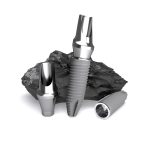A dental crown is a tooth-shaped cap that is placed over a tooth to restore its shape, size, strength, and improve its appearance. Dentists use crowns to restore weak, broken or decayed teeth. A crown fits over your entire tooth like a snug hat. To ensure a proper fit, a dentist will need to remove a small amount of enamel before bonding your new crown in place.
Dental crowns are used for several reasons such as strengthening a weak tooth, protecting and supporting a cracked tooth, restoring a worn-down or broken tooth, holding a dental bridge in place, covering a severely stained or discolored tooth, covering a root canal-treated tooth and covering a dental implant.
There are different types of dental crowns such as metal crowns which are made of gold, palladium, nickel and chromium. They rarely chip or break and last the longest in terms of wear. Porcelain-fused-to-metal (PFM) crowns combine the durability of metal and the natural look of porcelain. Pressed ceramic crowns have a hard inner core and mimic the translucency of natural tooth enamel. All-ceramic or porcelain crowns mimic the appearance of tooth enamel more than any other crown type and are also a good choice if you have metal allergies. All-resin crowns are generally less expensive than other types of crowns but they’re fragile.
Some dentists use CAD/CAM (computer-aided design and manufacturing) technology to create crowns in their office while you wait. Once your dentist designs your crown, they’ll send the image files to an on-site milling machine. The machine will craft your new crown from a solid block of ceramic





